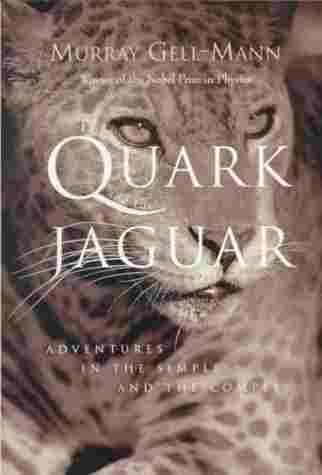The quark, the jaguar, and the laws of Jurisdynamics
 | [H]istory shows clearly that humanity is moved forward not by people who stop every little while to gauge the ultimate success or failure of their [own] ventures, but by those who think deeply about what is right and then put all their energy into doing it. — Murray Gell-Mann, The Quark and the Jaguar: Adventures in the Simple and the Complex 338 (1994) |
| Murray Gell-Mann's lyrical book, The Quark and the Jaguar, spans the subjects of interest to Jurisdynamics as perhaps no other book does. Gell-Mann connects linguistics, art, medicine, quantum physics, superstring theory, evolution, artificial intelligence, and contemporary threats to biological and cultural diversity. The entire book represents a tour de force in complexity theory and how that discipline can inform a broad range of inquiries in many scientific fields. The title of The Quark and the Jaguar comes from one of Gell-Mann's favorite poems: "The world of the quark has everything to do with a jaguar circling in the night." Arthur Sze, The Leaves of a Dream Are the Leaves of an Onion, River, River. To wit: Quarks are elementary particles, building blocks of the atomic nucleus. . . . [T]he quark symbolizes the basic physical laws that govern the universe and all the matter in it. . . . The jaguar stands for the complexity of the world around us, especially as manifested in complex adaptive systems. Together, Arthur's images of the quark and the jaguar . . . convey perfectly the two aspects of nature that I call the simple and the complex: on the one hand, the underlying physical laws of matter and the universe and, on the other, the rich fabric of the world that we perceive directly and of which we are a part.  Gell-Mann, along with George Zweig, predicted the existence of quarks. Gell-Mann alone holds the distinction of naming them quarks, after a passage from Finnegans Wake: "Three quarks for Muster Mark!" The former feat earned him the Nobel Prize in Physics. The latter connects him in a beautiful way with another discipline graced by Alfred Nobel's bequest: literature. Gell-Mann, along with George Zweig, predicted the existence of quarks. Gell-Mann alone holds the distinction of naming them quarks, after a passage from Finnegans Wake: "Three quarks for Muster Mark!" The former feat earned him the Nobel Prize in Physics. The latter connects him in a beautiful way with another discipline graced by Alfred Nobel's bequest: literature.At MoneyLaw, I have more to say about Gell-Mann and his views on academic culture. As this post's opening quote suggests, Gell-Mann cares passionately not only about pure knowledge, but also about its application to real-world problems. For purposes of Jurisdynamics, which operates in that realm where beauty holds sway in its eternal rivalry with truth, it suffices to close with this simple demonstration of the quark-based structure of neutrons and protons: | |
 The action inside the nucleus of a deuterium atom containing a proton and a neutron, each with three quarks: An electron strikes a quark inside a proton, passing energy to the quark before the electron bounces back. The quark now has so much energy "stuffed" into it, it creates a cascade of new particles as it flies out of the proton. The result is two new, two-quark particles. | |












2 Comments:
The only interest I had in Quark was he on Star Trek ( My granddaughter loves him and Worf). Will be checking out this lyrical book
Thanks for the reminder of Gell-Mann and the universal dance.
Somewhat tangentially, yet related to the power of natural beauty and the metaphorical jaguar circling in the night, is the evocative, many layered film "The Old Man Who Read Love Stories", directed by Rolf de Heer, Australian director who also made the seminal "Bad Boy Bubby".
http://www.imdb.com/title/tt0223832/
Post a Comment
<< Home